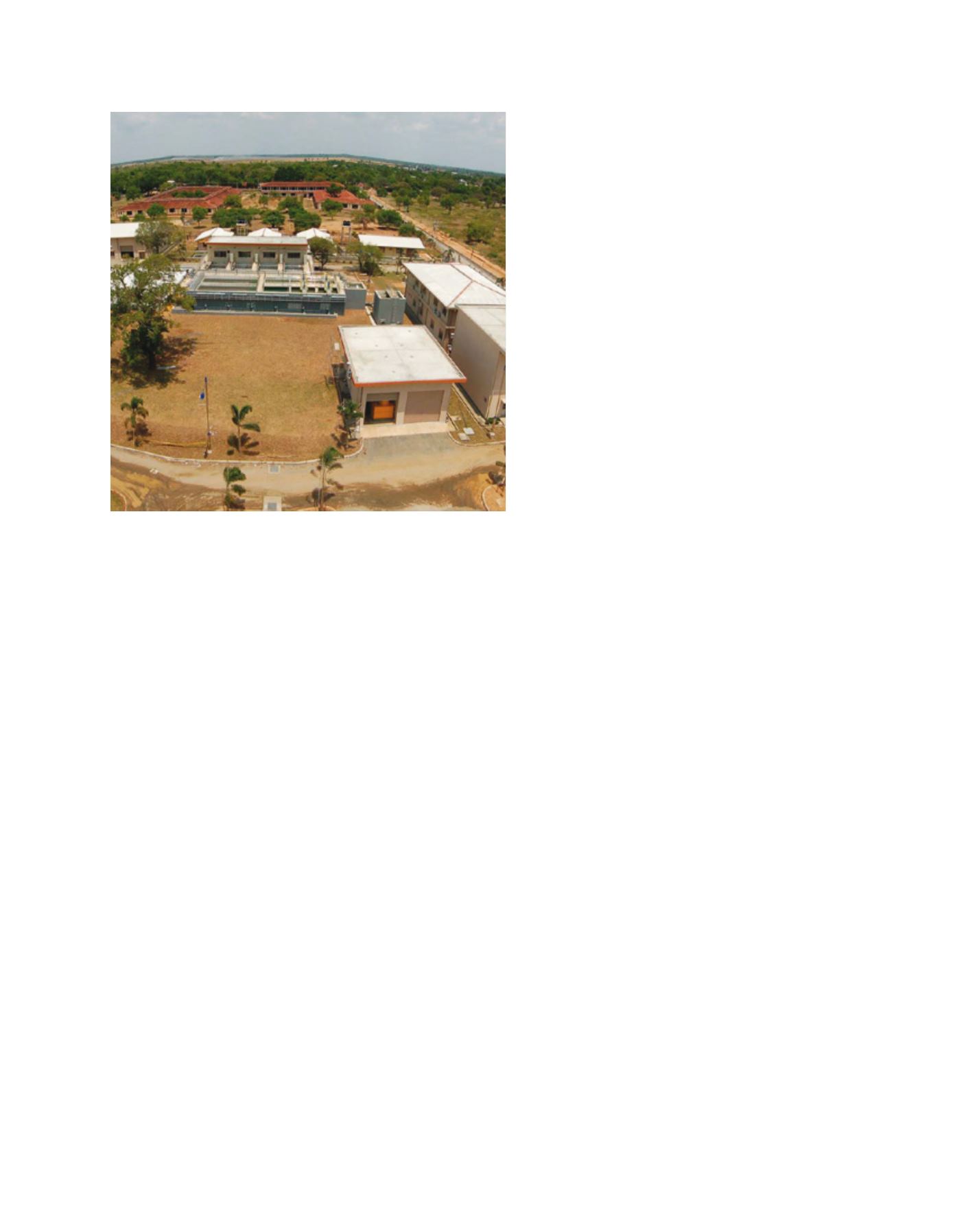

[
] 314
I
nternational
C
ooperation
on
W
ater
S
ciences
and
R
esearch
such as turbidity, dissolved organic carbon, residual
chlorine, NH
4
-N, NO
3
-N, NO
2
-N, oxidation reduc-
tion potential and so on are automatically monitored
by sensors installed at intake, water treatment plant,
distribution reservoirs, distribution pipelines and
taps. The expert decision system consists of automatic
control dosing systems for coagulant and chlorine, and
a water supply pump schedule system. The system
assists the operator to make fast and accurate deci-
sions for optimum operation.
The H-Eco system is expected to reduce operation
costs (chemicals, electricity and so on) through a
remote control system. It is also expected to provide
stable operation of the water treatment plant through
a real-time monitoring and remote expert decision-
making system.
Packaged water treatment system in
Ulaanbaatar, Mongolia
KICT has developed multi-purpose small-scale water
treatment package systems: a regionally customized
water treatment system, a mobile emergency water
treatment package system, and an integrated manage-
ment system for distributed water treatment plants.
This project has set targets such as selecting a
suitable water quality guideline and drawing up key
technology applicable to local areas. The system is
named the ‘E
3
system’ because it achieves the three
targets of high efficiency, cost-effectiveness and low
energy consumption.
Mongolia was chosen as a target country in which
to test the operational safety of the system under
various weather conditions, due to its intense cold
in winter. An active on-site investigation was carried
out at Ulaanbaatar by building cooperation with the
Mongolian Government. As a result of the water
quality analysis, a skid-type pilot system was targeted
to control manganese and bacteria. The system
was installed in a 20-foot container compliant with
International Organization for Standardization stand-
ards. A manganese-coated sand filter was chosen to
control manganese and particle contaminants in the
water. The ultraviolet disinfection system followed
to remove pathogens. The water treatment package
system was designed with a capacity of 24 m
3
per day,
supplying safe drinking water to between 3,000 and
6,000 people in a day, assuming that one person typi-
cally consume 4-8 litres of water daily.
KICT has a plan to improve system performance
through the long-term operation. This operational
know-how is expected to provide Mongolia with safe
and reliable water distribution by providing locally-
available resources and an operating manual for
sustainable operation and maintenance. In addition,
technological support and business interchange with
the Mongolian Government will be carried forward
in a scheme established by mutual agreement. This
corporation is expected to be helpful to water industry
development between Korea and Mongolia.
integrity, was reinforced. An economical maintenance process was
achieved by optimization and modification in part of the pump
operation, membrane cleaning procedures and membrane operation
modes. The total waterworks system including distribution lines
was also improved.
The H-Eco water supply control system in
Polonnaruwa, Sri Lanka
The Polonnaruwa drinking water treatment plant was designed
and constructed at Polonnaruwa, Sri Lanka in 2012 by Hyundai
Engineering with support from the Asian Development Bank and
the Government of Sri Lanka. The plant purifies river water by a
conventional process of intake, coagulation, sedimentation, sand
filtration and disinfection. Its capacity is 13,500 m
3
per day and
it supplies safe drinking water to the people of Polonnaruwa city.
In many cases, water treatment plants in developing countries are
not operated properly due to problems such as a lack of skilled oper-
ators and maintenance experience. In order to solve this problem,
Hyundai Engineering has developed the H-Eco water supply control
system, which is a remote monitoring and operator support system.
The system collects the water quality and flow rate data from sensors
installed in intake, water treatment plant, distribution pipelines
and taps. The collected data are analysed and assist the operator to
manage the water treatment system efficiently by providing online
information about optimal operating conditions in the water treat-
ment plant. The H-Eco system networks several water treatment
plants scattered around the world with the main office of Hyundai
Engineering in Seoul. It also provides solutions for operation and
maintenance to the operators in the plants.
The H-Eco system consists of a water quality and water flow rate
monitoring system, a remote expert decision system and remote
monitoring and operator support system. In the water quality and
flow rate monitoring system, water flow rate and water quality
Polonnaruwa drinking water treatment plant in Sri Lanka
Image: Hyundai Engineering


















